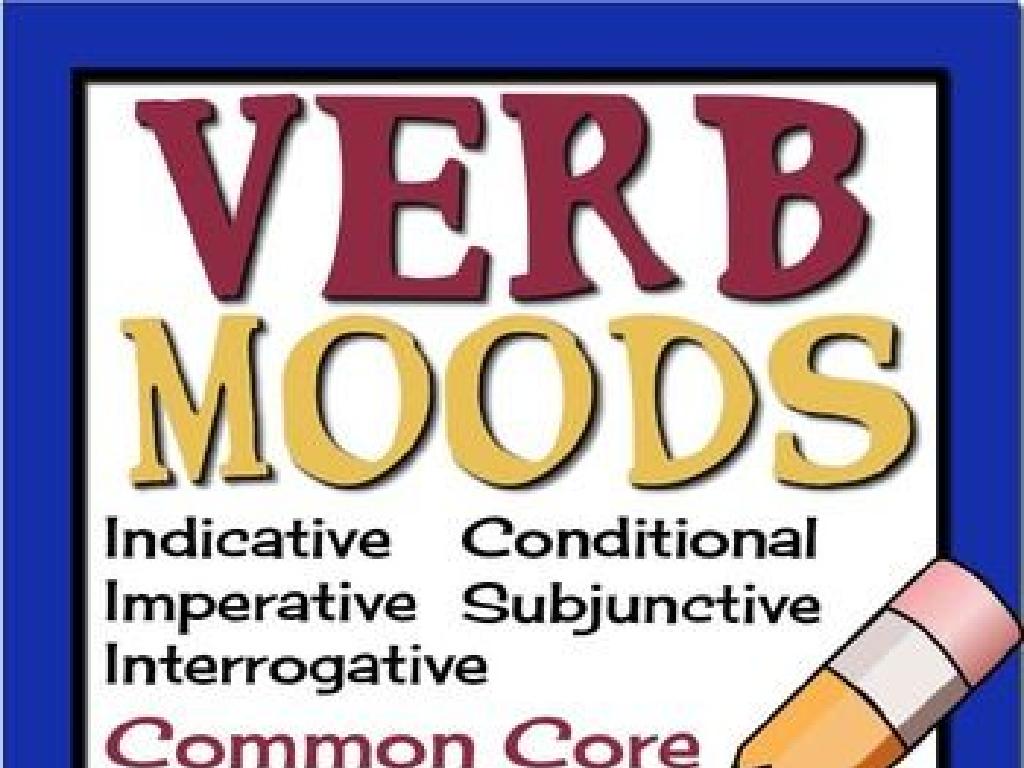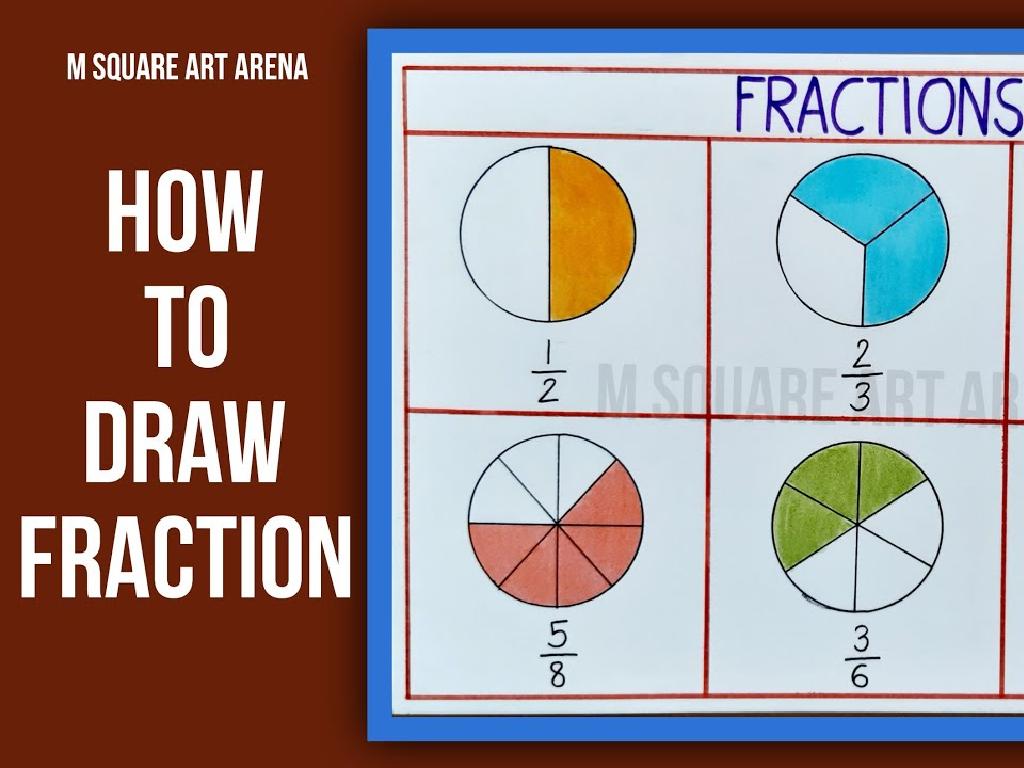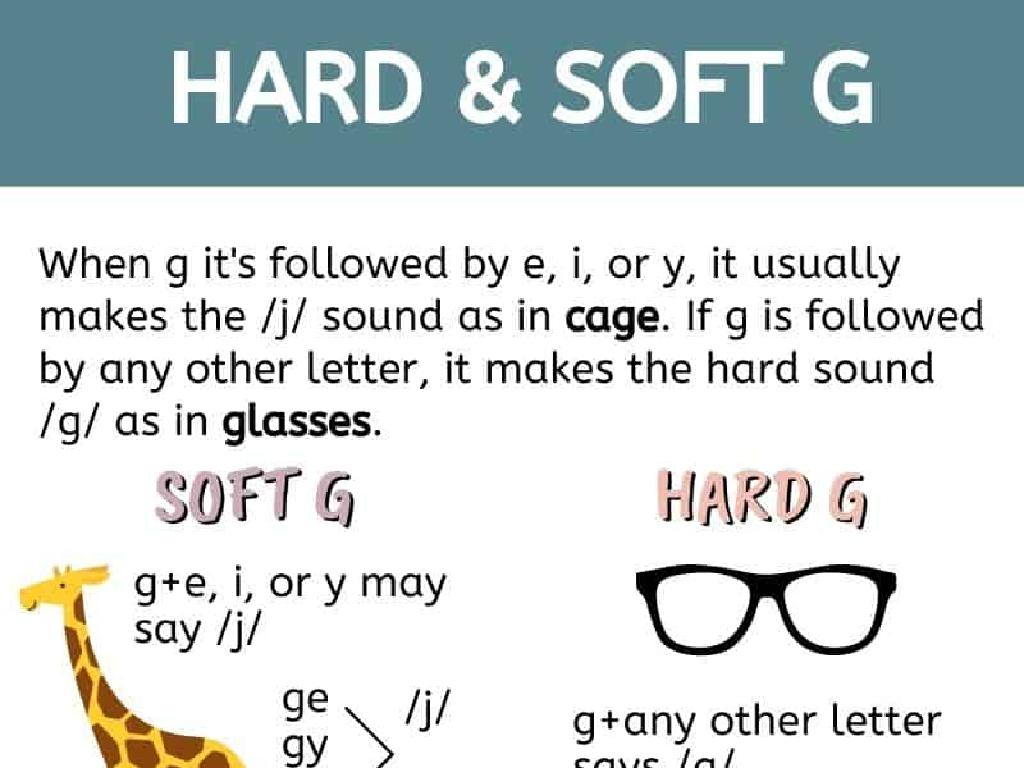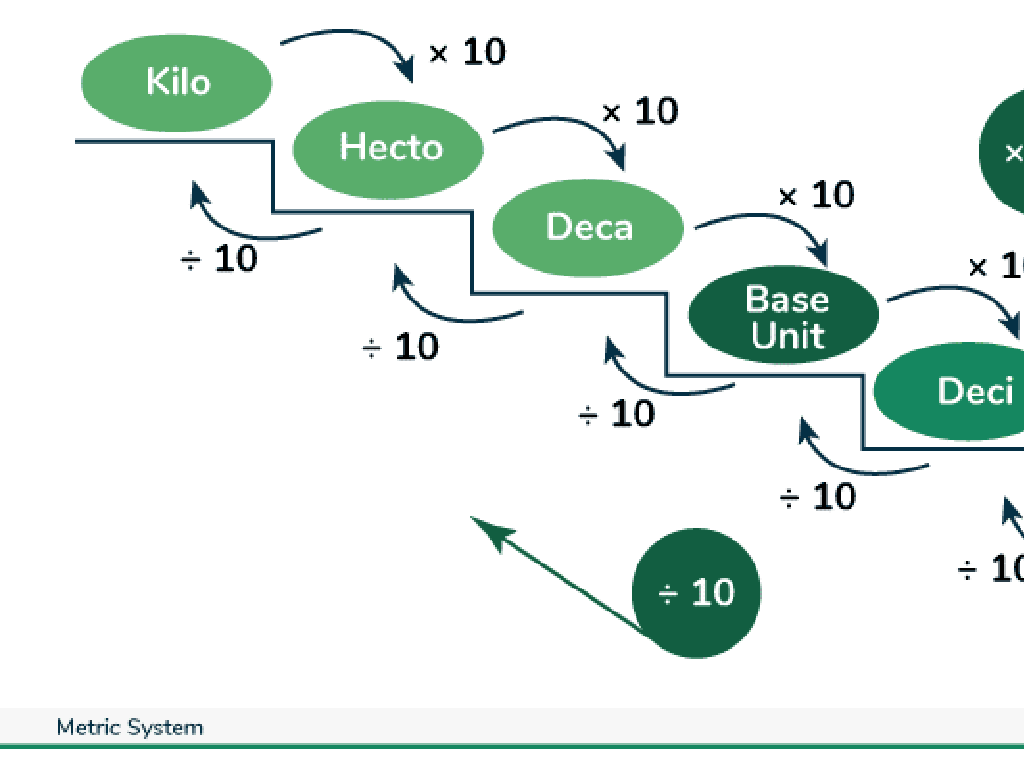Percents Of Numbers: Word Problems
Subject: Math
Grade: Eighth grade
Topic: Percents
Please LOG IN to download the presentation. Access is available to registered users only.
View More Content
Welcome to Percents!
– Percents in daily life
– A percent represents a part of a whole as a fraction of 100.
– Shopping and statistics usage
– Discounts in shopping, data in statistics are often in percents.
– Quick review of percent concept
– A percent is a ratio that compares a number to 100.
– Understanding percent calculations
|
This slide introduces students to the concept of percents and their relevance in everyday life. Begin by explaining that a percent is a way of expressing a number as a fraction of 100, which is a fundamental concept in understanding percentages. Illustrate how percents are commonly used in shopping through discounts and in understanding statistics that they encounter in news or reports. Review the basic definition of a percent to ensure that all students are on the same page before moving on to more complex calculations. Emphasize real-world applications to make the concept more relatable and easier to grasp. Encourage students to think of examples where they have encountered percentages in their own lives.
Understanding Percents
– ‘Percent’ means ‘per hundred’
– Percents as fractions and decimals
– A percent can be expressed as a fraction with a denominator of 100, or as a decimal.
– Example: 50% equals 1/2 and 0.5
– 50% can be written as 1/2 in fraction form or 0.5 in decimal form.
– Example: 25% equals 1/4 and 0.25
– Similarly, 25% is the same as 1/4 as a fraction or 0.25 as a decimal.
|
This slide introduces the concept of percents to the students, explaining that the term ‘percent’ is derived from the Latin ‘per centum’, which means ‘per hundred’. It’s crucial for students to understand that percents are another way to express fractions and decimals. For example, 50% represents 50 out of 100, which simplifies to 1/2, and is equivalent to the decimal 0.5. Similarly, 25% means 25 out of 100, which simplifies to 1/4, and is equivalent to the decimal 0.25. Encourage students to practice converting between percents, fractions, and decimals with various examples to solidify their understanding.
Calculating Percents of Numbers
– Understand the percent formula
– Use the formula: Percent x Base = Amount to find the percentage
– Example: Calculate 20% of 50
– 20% of 50 is found by 0.20 x 50 = 10
– Practice Problem: 30% of 80
– Apply the formula: 0.30 x 80 = ?
|
This slide introduces the fundamental formula for calculating percentages of numbers, which is a critical skill in math and real-life applications. Start by explaining the formula where ‘Percent’ is the percentage you want to find, ‘Base’ is the whole quantity, and ‘Amount’ is the part of the base that is the percent. Use the example of 20% of 50 to show how to convert the percentage to a decimal and then multiply by the base to find the amount. For the practice problem, guide students to apply the same steps to find 30% of 80, reinforcing the concept. Encourage students to solve the problem on their own and then discuss the solution in class. This exercise will help solidify their understanding of percentage calculations.
Percents in Real-Life Word Problems
– Read the problem carefully
– Understand the context and details
– Identify ‘Whole’ and ‘Part’
– ‘Whole’ is total amount, ‘Part’ is a portion of the whole
– Step-by-step problem solving
– Break down the problem, use percent formulas
– Apply to real-life scenarios
– Use examples like discounts, tax, and tips
|
This slide aims to equip students with the skills to tackle word problems involving percents by applying a structured approach. Emphasize the importance of reading the problem carefully to grasp the context and the specific details required to find a solution. Clarify the concepts of ‘Whole’ (the total or complete amount) and ‘Part’ (a segment or fraction of the whole) as they relate to percents. Guide students through a step-by-step methodology to solve these problems, which includes understanding the question, writing down what is known, setting up equations, and solving for the unknown. Reinforce learning by applying these steps to real-life situations such as calculating discounts during shopping, figuring out tax amounts, or determining tips at restaurants. Encourage students to practice with a variety of problems to gain confidence.
Calculating Discounts with Percents
– Understand the word problem
– Identify key information
– Original price: $60, Discount: 25%
– Calculate the discount amount
– Multiply original price by percent off
– Find the sale price
– Subtract discount from original price
|
This slide is aimed at teaching students how to approach and solve percent word problems, specifically calculating discounts. Start by carefully reading the problem to understand what is being asked. Next, identify the important information needed to solve the problem, such as the original price and the percent discount. To calculate the discount amount, convert the percentage to a decimal by dividing by 100 and then multiply by the original price. Finally, find the sale price by subtracting the discount amount from the original price. For example, with a 25% discount on a $60 jacket, the discount is $60 x 0.25 = $15, so the sale price is $60 – $15 = $45. Encourage students to practice with different percentages and original prices to gain confidence in solving these types of problems.
Calculating Percentages: Practice Problems
– Find 15% of 200
– 15% of 200 is 0.15 * 200
– Calculate 10% discount on a $40 shirt
– Original price minus 10% of $40
– Determine 5% discount on a $20,000 car
– Subtract 5% of $20,000 from the original price
– Apply percentage formulas in word problems
|
This slide presents practical problems for students to apply their knowledge of calculating percentages in real-world scenarios. For the first problem, students should multiply 200 by 0.15 to find 15% of 200. In the second problem, they need to find 10% of $40 and subtract that from the original price to find the sale price. The third problem requires them to calculate 5% of $20,000 and then subtract it from the original price to find the final price of the car. These problems are designed to reinforce the concept of percentages and provide a foundation for solving more complex word problems. Encourage students to set up the problems step by step and to check their work carefully. Provide additional examples if time permits, and remind students to express their answers in terms of currency when appropriate.
Class Activity: Percent Scavenger Hunt
– Find percent examples around school
– Identify ‘Whole’, ‘Part’, and Percent
– ‘Whole’ is the total amount, ‘Part’ is a portion of the whole
– Calculate the Percent
– Use the formula Percent = (Part/Whole) x 100
– Share findings with the class
|
This interactive activity encourages students to explore their environment to find real-life applications of percents. Provide students with examples of where to find percents, such as statistics in sports, discounts in advertisements, or nutrition labels. Remind them to identify the ‘whole’ (the total or complete amount) and the ‘part’ (the segment or piece of the whole). They should then use the formula Percent = (Part/Whole) x 100 to calculate the percent. After the scavenger hunt, students will present their findings to the class, explaining the ‘whole’, ‘part’, and how they calculated the percent. This will help reinforce their understanding of percents in a practical context. Possible variations of the activity could include finding percents in different contexts, such as in recipes, on clothing tags, or in financial news.
Wrapping Up: Percents in Real Life & Homework
– Recap: Percents in word problems
– Percents in everyday decisions
– Understanding percents can help with discounts, tips, and finance.
– Homework: 10 word problems
– Worksheet to solve real-life percent problems.
– Practice makes perfect
– Reinforce today’s lesson and prepare for next class.
|
As we conclude today’s lesson, it’s important to review the key concepts and applications of percents in word problems. Emphasize the role of percents in daily decision-making, such as calculating discounts during shopping, determining the amount to tip at restaurants, and managing personal finances. For homework, students are assigned a worksheet with 10 word problems that involve percents, which will help them practice and solidify their understanding. Encourage students to approach these problems methodically, using the strategies discussed in class. Remind them that consistent practice is crucial for mastery, and this homework will prepare them for more complex percent calculations in future lessons.






